Seville is one of the best known destinations in Spain and, as such, is likely to be included on any travel itinerary for Spain. Located in the south of Spain, Seville is loaded with eye-popping scenery and an intoxicating cultural scene. You’ll have no trouble keeping yourself busy for several days experiencing all that Seville has to offer.
However, Seville is just the tip of the iceberg when it comes to traveling through the region of Andalusia. This part of Spain is rich with beautiful towns, captivating cities, and diverse landscapes all waiting to be explored, and Seville is perfectly located for that. What’s more, some of the best places to visit from Seville aren’t even located in Spain, meaning you have a wide range of destinations to choose from. To help you decide where to go, here are some of the best day trips from Seville.
How to Get Around
Although you can make many of these day trips with public transport, consider renting a car for the day to give yourself more flexibility and independence. With your own four wheels, you control your time and schedule. Depending on how many people are in your group, renting a car might even work out to be cheaper than other forms of transportation. You can compare car rental deals and find the lowest prices at Rentalcars.com, an aggregation site that searches and displays prices and availability from hundreds of car rental companies, helping you find the best possible car for your budget.
Don’t want to drive or deal with the hassle of public transport? No worries! We’ve listed the best tour for each day trip (where available).
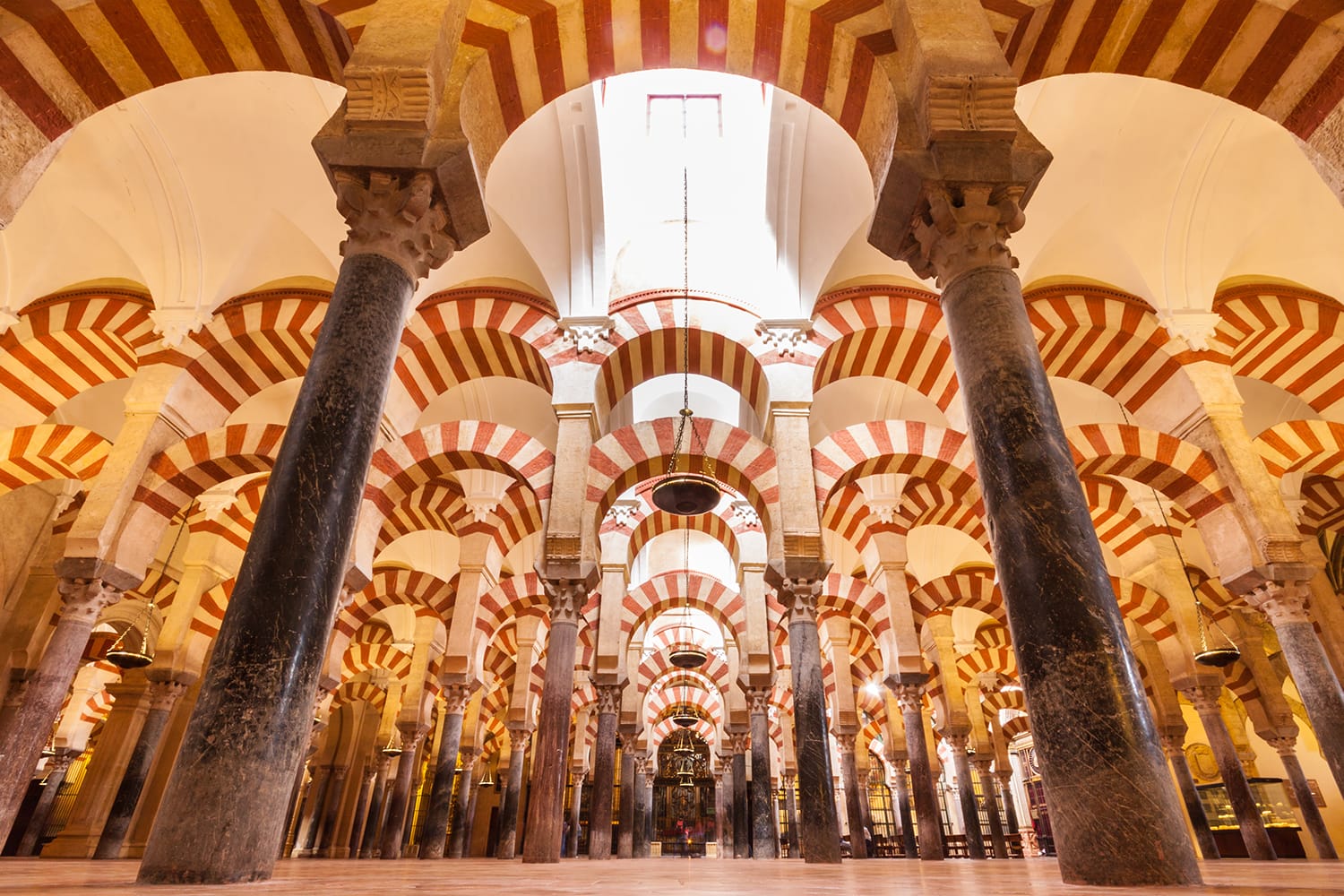
1. Cordoba
You’ll be hard pressed to find a more captivating destination to visit for the day than the ancient city of Cordoba. There’s a reason that it’s one of the most popular day tours from Seville after all. Begin with the unique Mezquita, an unusual mosque-turned-cathedral that captivates with its interior full of arches made of precious stones. Then, take a stroll down to the riverfront, where you’ll find the Roman Bridge built in the first century BCE stretching to the far bank. Back in the historic center, stroll Cordoba’s maze of lanes and alleys that make up its Jewish Quarter and find quiet courtyards covered in flower baskets. You also won’t want to miss the spectacular Alcázar de los Reyes Cristianos, a medieval palace with terraced gardens and fountains.
Getting there: Getting to Cordoba entails an easy train trip from Seville, with frequent departures making the 50-minute journey. However, if you’d like to better understand the sights you’re seeing, you’ll want to look at taking a guided tour instead.
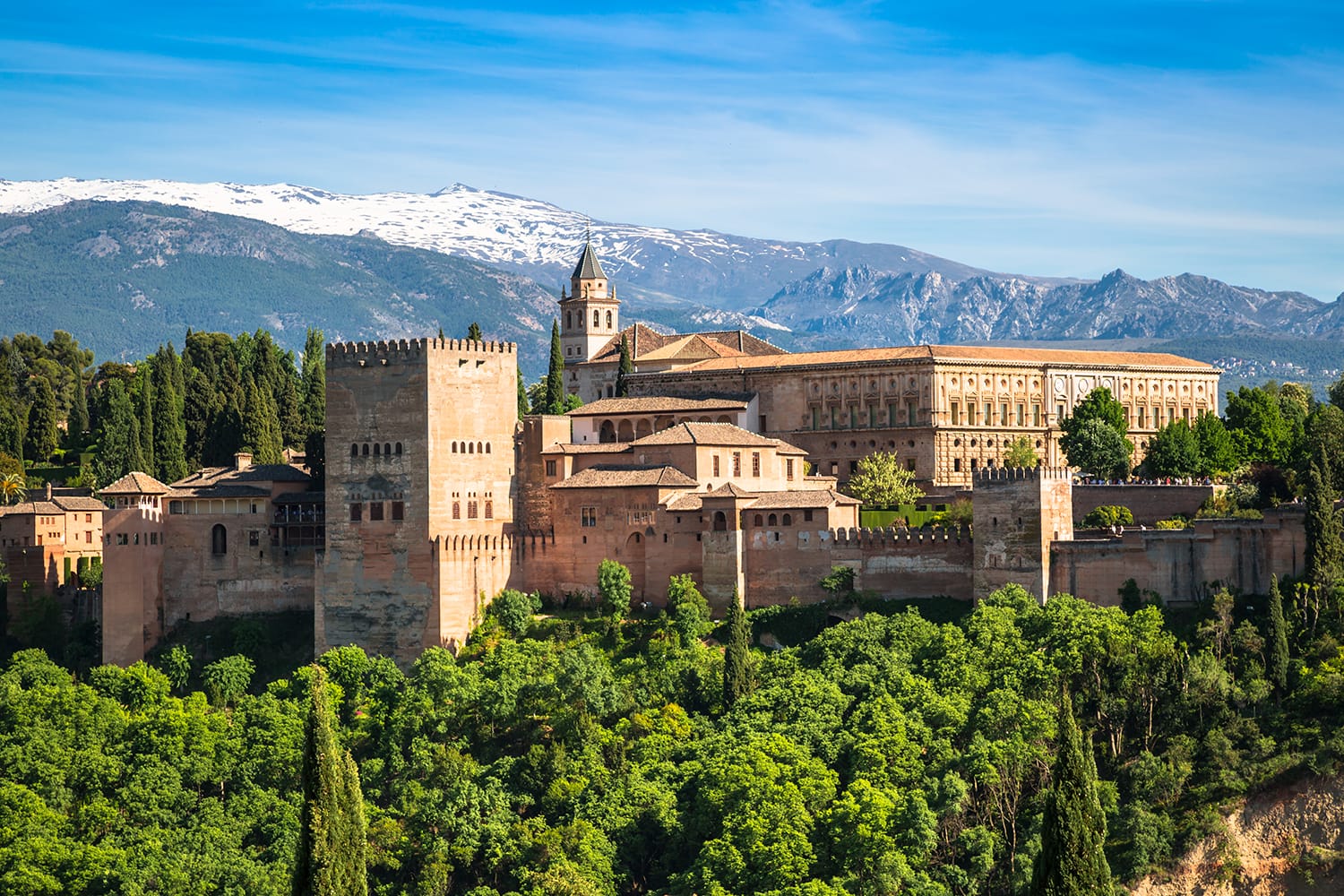
2. Granada
Andalusia is full of large cities bursting with culture and character. One such city is Granada, which, thanks to its superb attractions, is among the best Seville day trips. You’ll want to head straight for the world-famous Alhambra when you get there so that you can allow yourself as much time as possible to explore it. Within the vast fortress, you’ll find the beautiful Generalife Gardens, the stunningly ornate Nasrid Palaces, and the Alcazaba fortifications, which have panoramic views of Granada. Outside the walls of the Alhambra is the old Moorish quarter of Albaicín; with its whitewashed houses, the neighborhood is great for a wander. There are also sights to be seen in the city center, particularly the enormous Granada Cathedral.
Getting there: Surprisingly, there are only a few trains each day that travel from Seville to Granada, with the trip taking around 2.5 hours. If you’d rather not worry about transport, consider visiting with an organized tour.
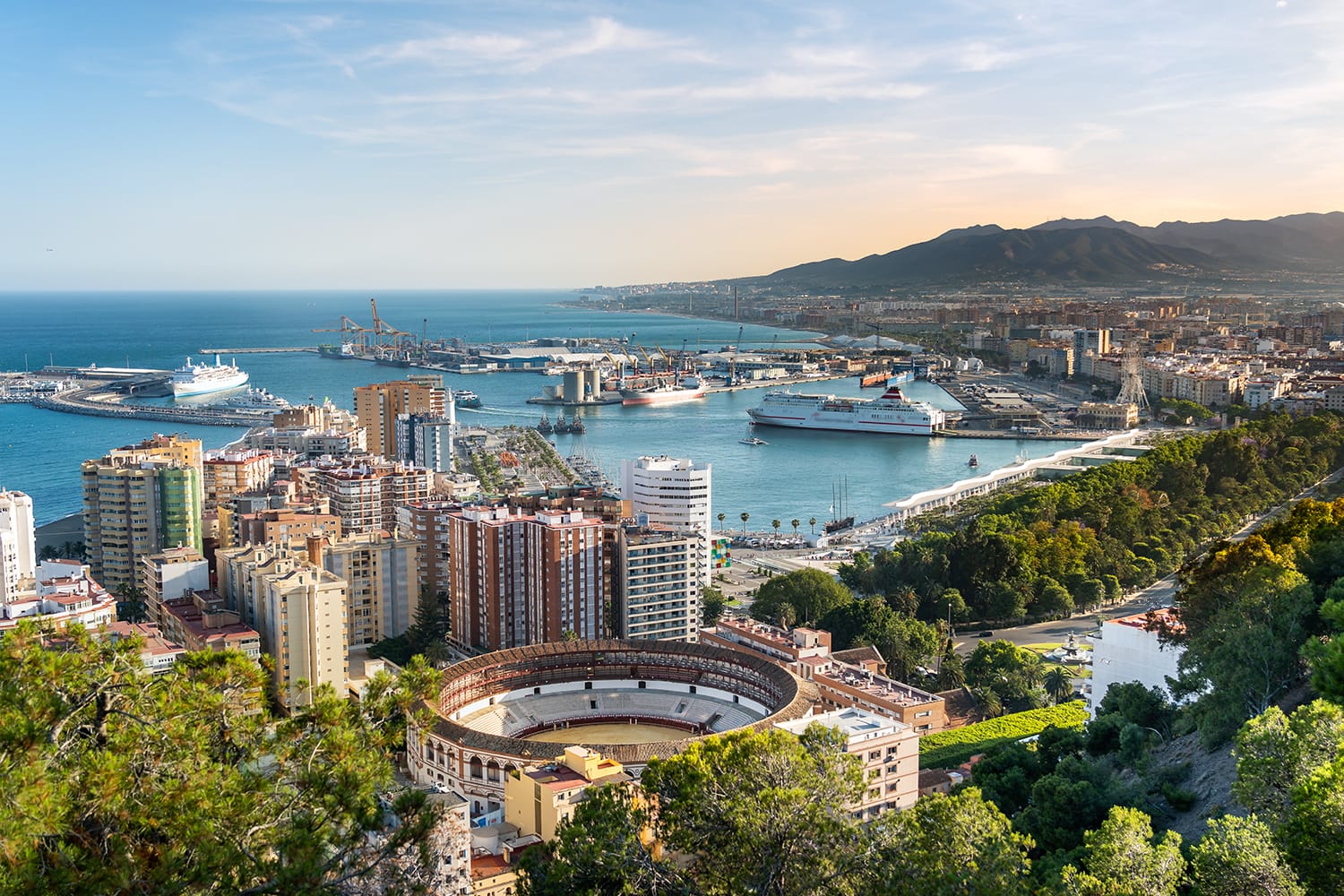
3. Malaga
One of the best places to visit in Spain from Seville is the port city of Malaga, down on the Costa del Sol. While you could simply head to Malaga for its beaches, particularly Playa la Malagueta, the city also has plenty of historical and cultural attractions to experience. Begin with the ancient yet well-preserved ruins of the Roman theater, which indicate just how ancient the city is. Nearby you’ll spot the Picasso Museum, which has countless works of art from the famed Malaga-born artist. In the historic center, there’s the stunning Renaissance architecture of the Malaga Cathedral, as well as the Mercado Central de Atarazanas, which is full of local food stalls and tapas bars to enjoy. Next, it’s time for a walk up to two Moorish landmarks, the Alcazaba Palace and Gibralfaro Castle, which sit on hills overlooking the city center.
Getting there: There are trains traveling from Seville to Malaga fairly regularly, and the journey usually lasts a little more than two hours.
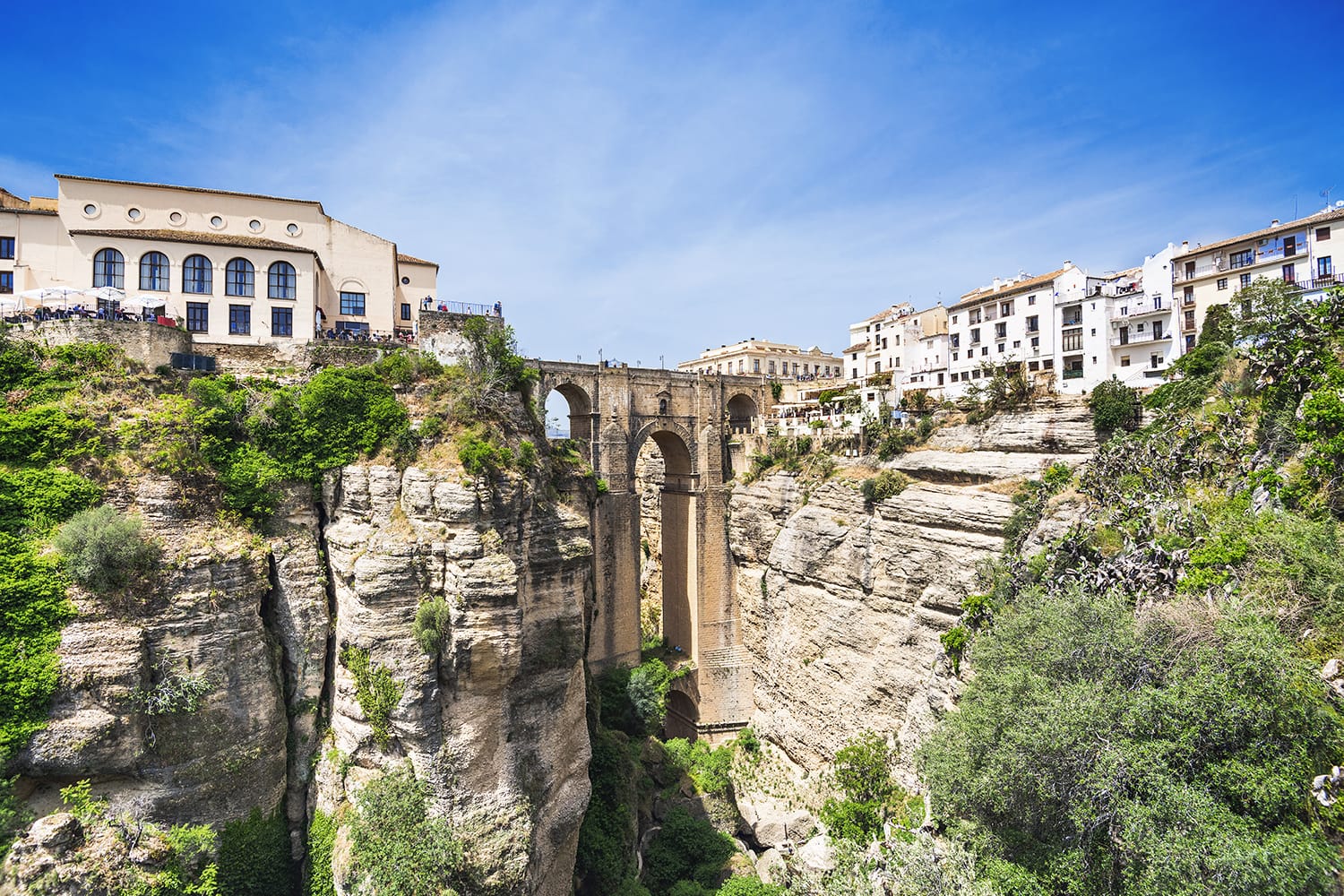
4. Ronda
When it comes to things to see in Spain outside of Seville, the scenic town of Ronda is not to be missed. The main draw for visitors to Ronda is El Tajo Gorge, which carves its way down the town’s middle. It’s here that you can see Ronda’s star attraction, the Puente Nuevo bridge, which spans the deep gorge. There are several viewpoints that offer great views of the bridge, as well as clifftop spots like the Mirador de Ronda that show off the region’s mountain scenery. To actually walk around within the gorge itself, head to the La Casa del Rey Moro, where a series of staircases takes you through its terraced gardens. Also in town is the Plaza de Toros, a local bullring from the 1700s, and the elegant Moorish palace, Palacio de Mondragón.
Getting there: There are a select number of trains that travel from Seville to Ronda each day, transferring via other cities in the region. How long the journey takes depends on the connection, but it is usually at least three hours. A simpler option is to just go with a guided tour so that you don’t need to worry about the transport.
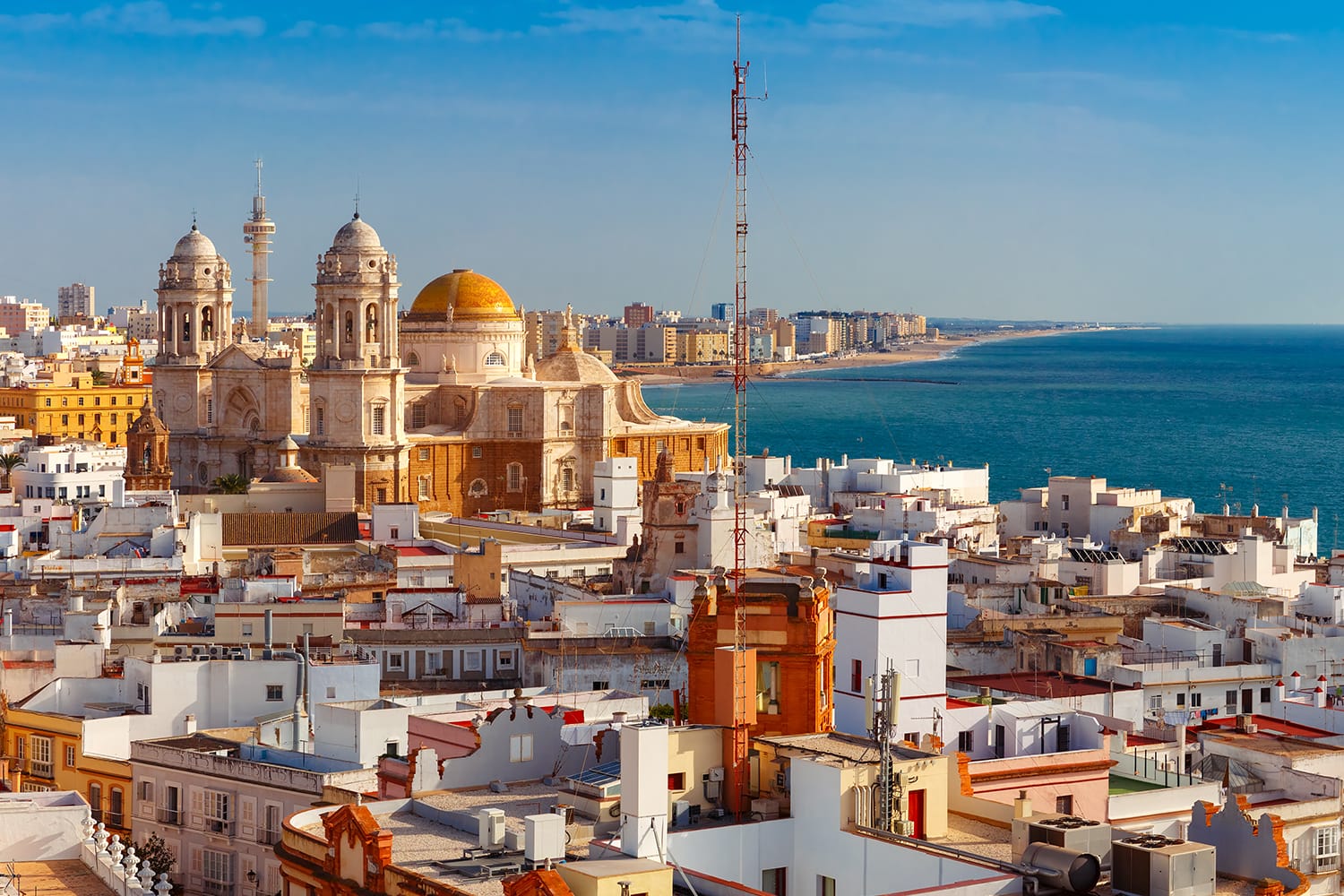
5. Cadiz
Even with so many cities in Andalusia to explore, the ancient port city of Cadiz remains a special place. That’s because Cadiz is believed to be the oldest continuously inhabited settlement in all of Europe. Start out at the Cadiz Cathedral, an elegant building from the 18th century with a bell tower that features great city views. Then head over into the center of the city where ruins of the ancient Roman theater lie close to the cathedral. In the heart of historic Cadiz stands the Torre Tavira, home to a camera obscura and more views of Cadiz’s rooftops. The city is situated on a narrow peninsula, with the two castles of San Sebastian and Santa Catalina protecting it from the sea. The popular La Caleta city beach sits in between.
Getting there: Hourly trains travel between Seville and Cadiz and the journey takes just over 1.5 hours. Alternatively, you can visit Cadiz with other parts of Andalusia on a guided tour.
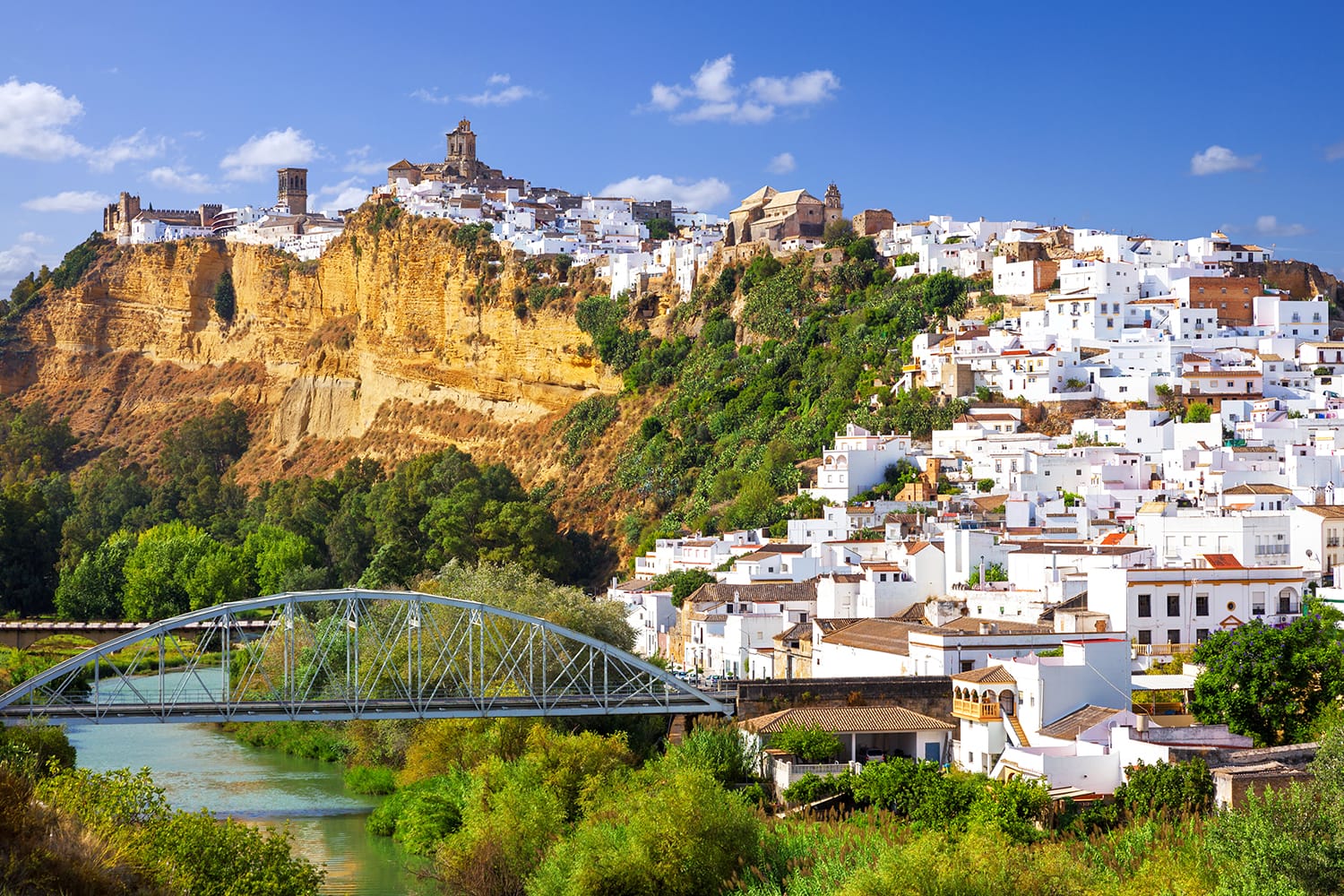
6. Pueblos Blancos (White Towns)
The Andalusia region is famous for its “white towns” that dot the countryside, towns where every house is whitewashed making them stand out against the scenery. There is an endless selection to choose from, and some towns are more popular than others. Three such towns that are also easy to get between are Zahara de la Sierra, Grazalema, and Setenil de las Bodegas. Zahara de la Sierra is adored for its picturesque scenery and the way the village curves around its Moorish hilltop castle. Grazalema is special for its location surrounded by hills in the heart of the Sierra de Grazalema Natural Park. Then there’s Setenil de las Bodegas, where the town’s white houses are wedged into the hillside like caves with a rocky overhang sitting above.
Getting there: You’ll find that most pueblos blancos are hard to reach directly by public transport and even harder to get between. This means that taking a guided tour is the best way to see several in a day.
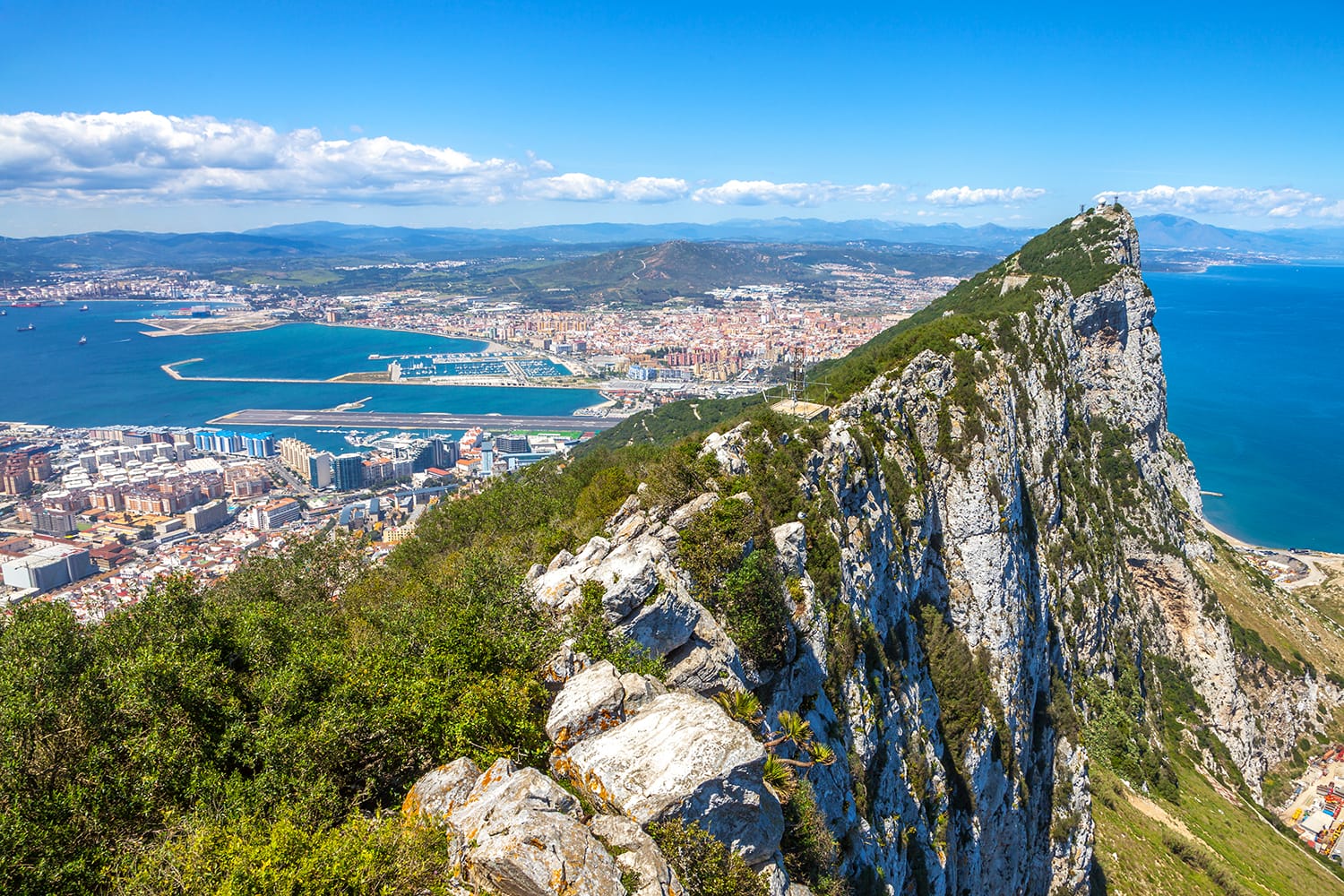
7. Gibraltar
It’s hard not to be intrigued by the idea of visiting the British territory of Gibraltar when you’re in the south of Spain. There’s nowhere quite like it, which is why it’s one of the best side trips from Seville. Heading over to Main Street, you’ll find plenty of duty free shopping and British touches here and there. However, a trip to Gibraltar isn’t complete without a trip up to the famed Rock of Gibraltar, which dominates the territory. With walking trails, the impressive caves of San Miguel, superb viewpoints, and mischievous Barbary macaques running around, there’s plenty to occupy your time there. Last but not least, head to the lighthouse at Punta de Europa for its views of the Strait of Gibraltar and the distant coastline of Africa.
Getting there: While there are bus journeys that go from Seville to Gibraltar via Algeciras, they take over three hours and don’t leave early enough for a proper day trip. You’ll need to take a guided tour to visit properly in a day.
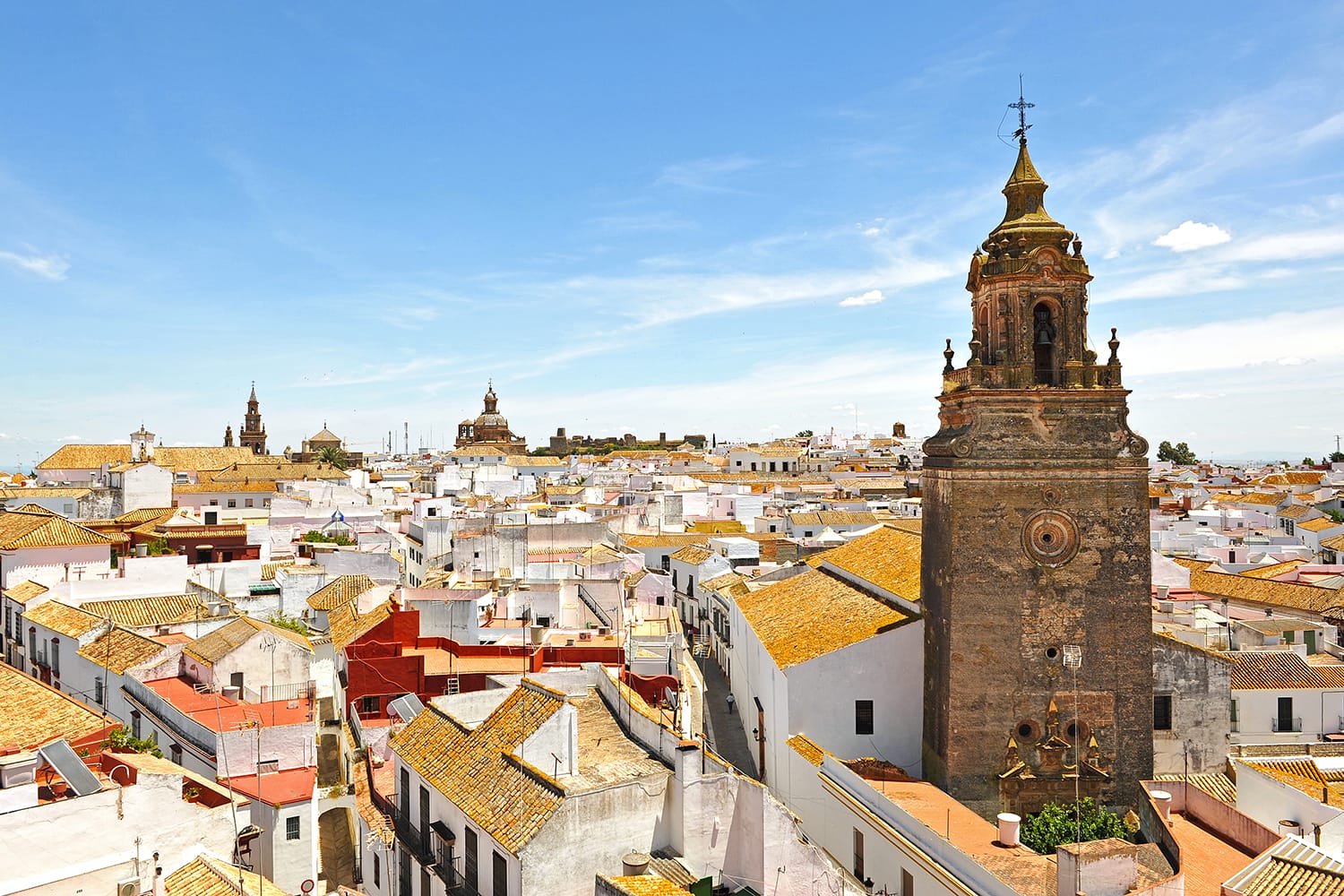
8. Carmona
Just a short trip from Seville lies the town of Carmona which, despite its small size, has a lot for tourists to enjoy. The town sits on a ridge, meaning it provides some seriously scenic views; but it’s what’s in Carmona that will really interest visitors. At the western end of town, you’ll find a cluster of ancient Roman landmarks, including an ancient amphitheater, the Tomb of Servilia and, most importantly, a necropolis. The other attractions of Carmona are located within the medieval town walls, accessed via the Gate of Sevilla. Inside, the Carmona City Museum will tell you more about the town’s long and storied history while the Church of Santa Maria and the Convento de Santa Clara are both a pretty sight. Then there’s the Alcázar de Puerta Sevilla, whose golden tower grants those who climb it the town’s best panoramic views.
Getting there: Local buses regularly travel from Seville to Carmona, taking roughly one hour to get there. If you don’t want to navigate the local public transport system, you can visit with a guided tour and be shown around.
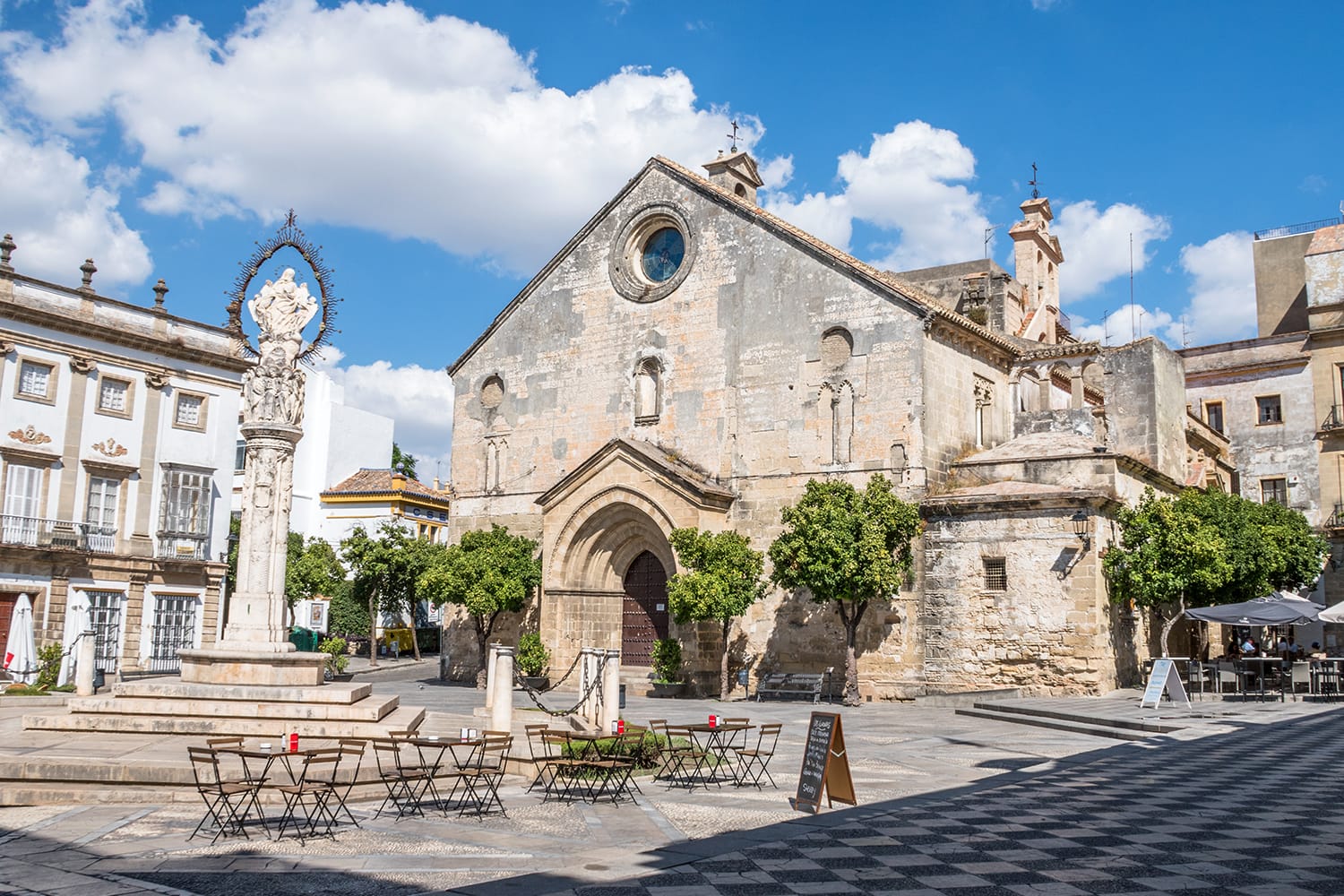
9. Jerez
Another destination not far from Seville is the coastal city of Jerez de la Frontera, a great choice for those looking to get off the tourist trail. Often just called Jerez, this underrated city is brimming with history and culture. Start with the Alcázar de Jerez at the heart of the city’s Old Quarter, as it’s home to the lovely Palacio Villavicencio, gardens, and traditional Arab baths. From there, it’s not far to Jerez Cathedral and its curious mix of architectural styles. Jerez is also known for the Royal Andalusian School of Equestrian Art, where you can see shows of dancing horses, as well as for its tradition of making sherry. For that, you can head to a local bodega where the sherry is produced and tour the cellars.
Getting there: There are hourly trains that travel to Jerez from Seville, and the trip lasts roughly one hour. If you’d like to see other destinations during the day as well, a guided tour can help you make the most of your time.
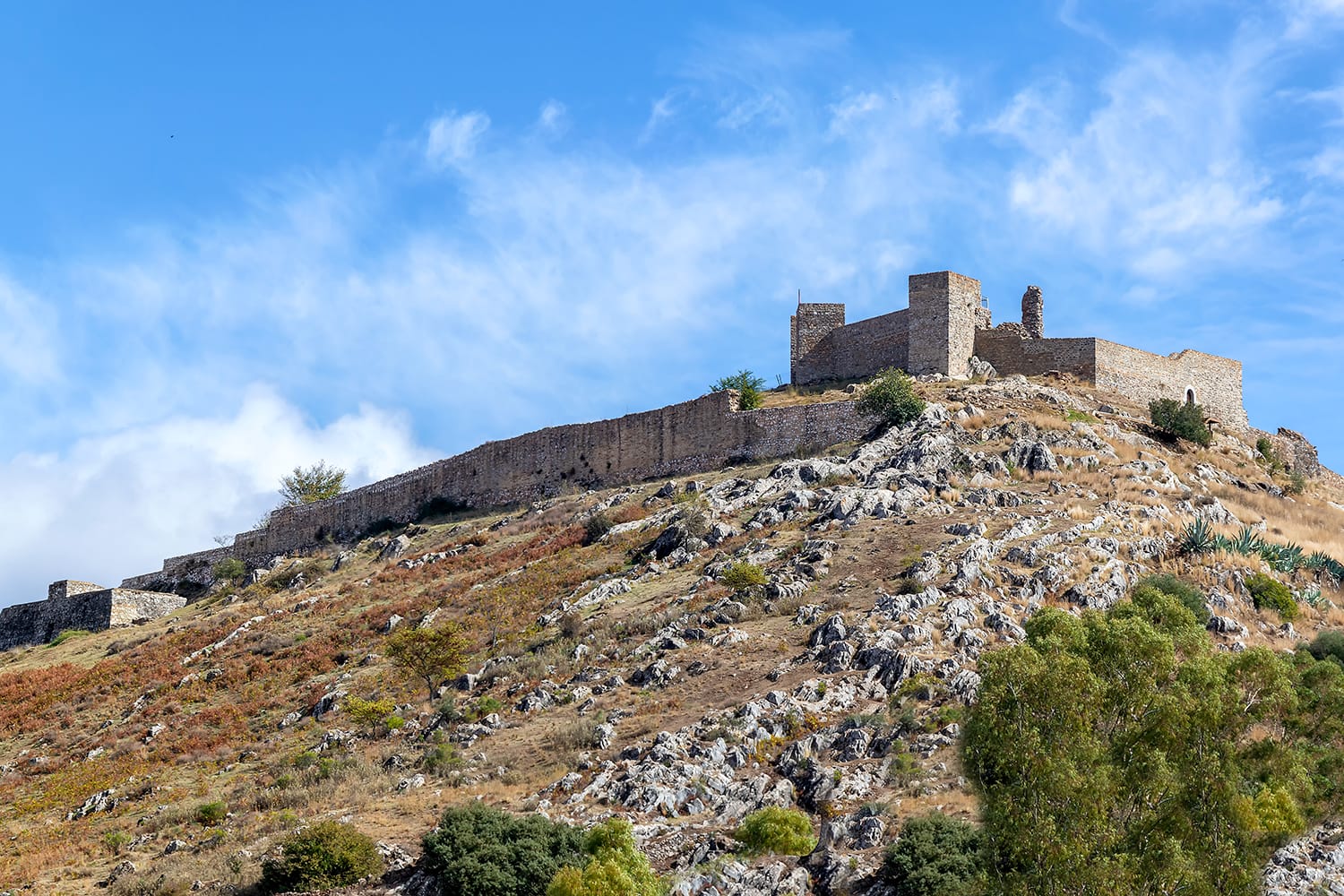
10. Aracena
To experience in one place all the elements that make up a quintessential Andalusian town, you can’t beat Aracena. It ticks all the boxes when it comes to the look and character of the region’s white towns. Start out with a walk through the town center to admire its whitewashed houses, before heading to the Museo del Jamón. Yes, this is a museum dedicated to the iconic jamón ibérico ham, one of Spain’s most beloved delicacies. Inside, you’ll learn everything about this national treasure and also enjoy a tasting session. Next, head over to the mighty Castillo de Aracena, which is loaded with complex medieval history. Finally, don’t miss the Gruta de las Maravillas, one of Spain’s largest caves and featuring countless stone formations.
Getting there: There are only a few buses each day that go from Seville to Aracena, with the trip lasting around 1.5 hours. If you don’t want the time pressure, you can visit with a guided tour instead.
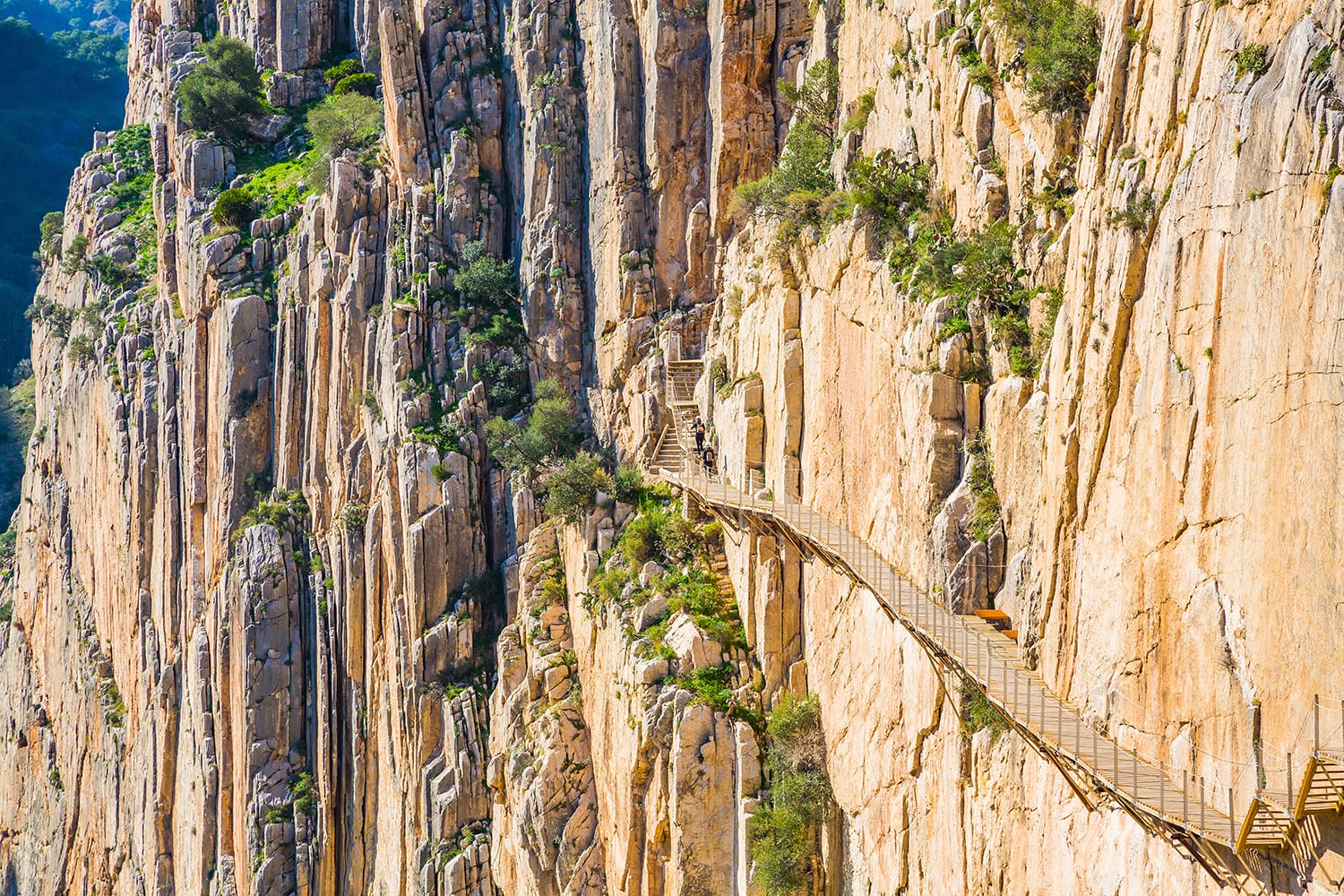
11. El Caminito del Rey
If you like to walk on the wild side of life, El Caminito del Rey is probably right up your alley. Once known as the “world’s most dangerous walkway,” this collection of hiking trails was notorious for its precarious conditions and casualties before its 2015 restoration. Nowadays you can take the cliffside boardwalk without fearing for your life and instead marvel at the jaw-dropping scenery of the Gaitanes Gorge and El Chorro Gorge. The complete hiking route runs for over seven kilometers, and it usually takes visitors about two to three hours to reach the end before returning to the start via bus. This day trip might not be suited to those afraid of heights, seeing as you need to cross a 35-meter-long suspension bridge that hangs 100 meters over the gorge floor.
Getting there: Only a few trains travel from Seville to El Chorro station each day, getting there in around 2.5 hours. If the train times don’t suit your plans, you’ll need to visit with an organized tour.
Book Tour to El Caminito Del Rey
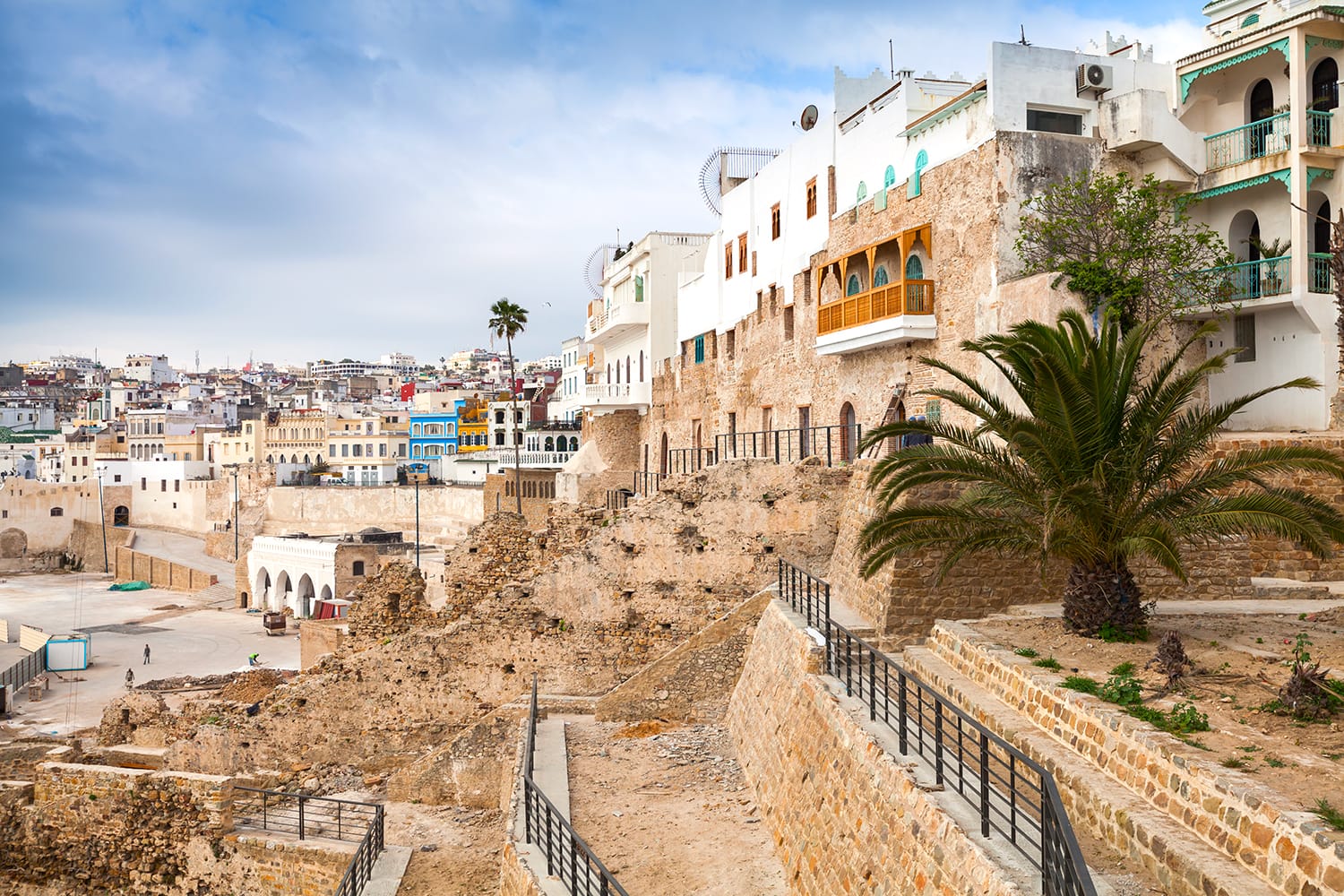
12. Tangier
Since Morocco is just across the Strait of Gibraltar from Spain, it’s actually possible to pop over to the North African country for the day. Ferries reach the port city of Tangier, making it the natural place to spend the day. Begin by exploring the maze-like streets of the medina above the harbor to get a feel for the city and see its many stores selling local goods and handicrafts. Next, make your way to the Kasbah Museum inside the well-preserved former palace of Dar el Makhzen. Down along the waterfront, you’ll find the Tangier Corniche that runs along the city beach into the modern part of Tangier. Some of Tangier’s best sights, though, are outside the city on the Cap Spartel promontory. These include the Phare Cap Spartel, a lighthouse, and the Caves of Hercules, said to be where the legendary figure slept during one of his 12 labors.
Getting there: Public transport connections between the bus and ferry mean that it’s not a viable way to get from Seville to Tangier. The only real option is to visit with a guided tour, which will minimize travel time and maximize sightseeing.
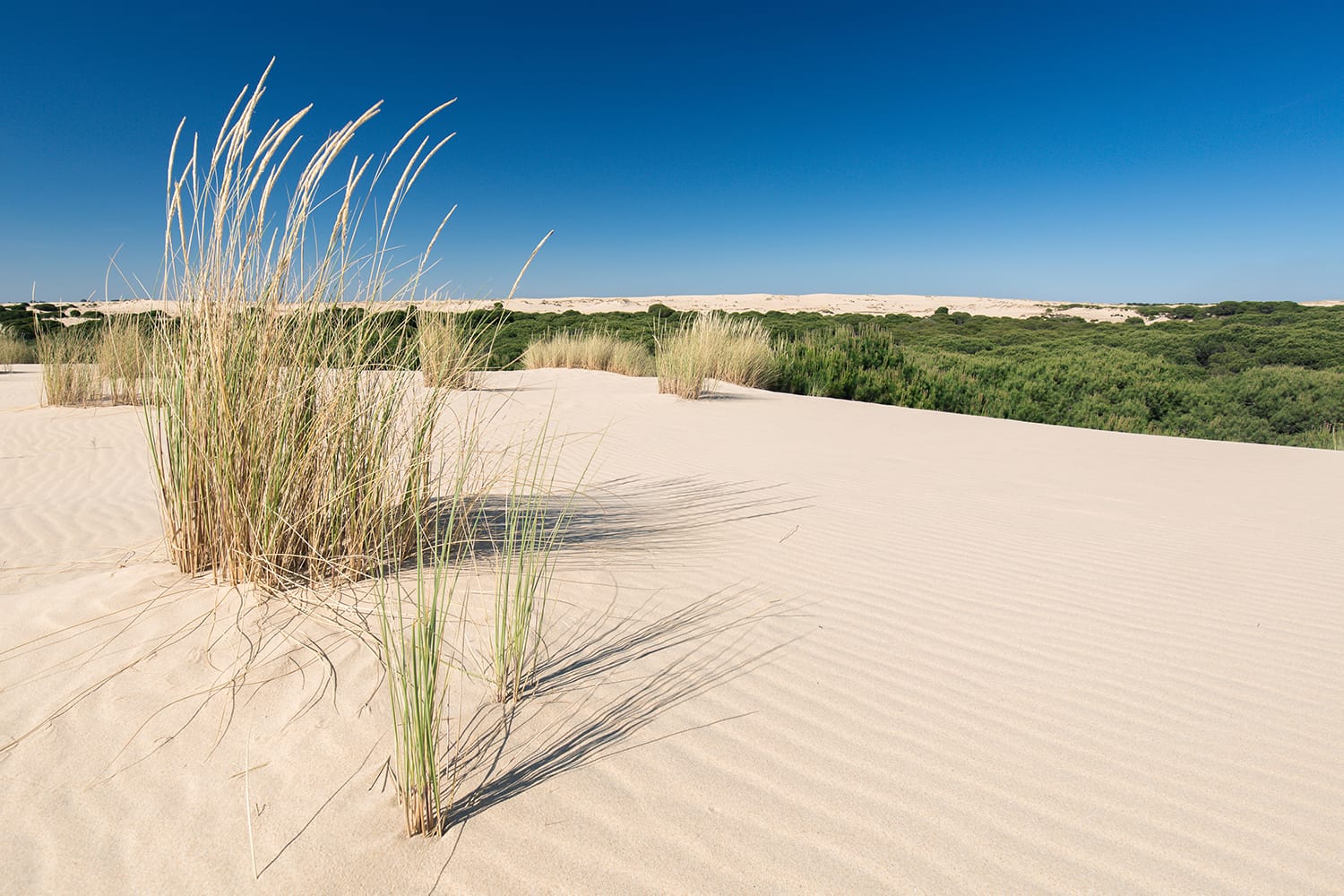
13. Doñana National Park
You probably wouldn’t expect to visit marshland and sand dunes in this part of Spain, and yet that’s what you’ll see on a trip to Doñana National Park. The UNESCO world heritage-listed natural reserve is celebrated for its biodiversity and various ecosystems, making it great for those wanting a day surrounded by nature. Each of the national park’s habitats offers different opportunities. Whether you want to watch the flamingos in the wetlands, ride horses through the sand dunes, or walk down trails along streams and through forests, you can find it here. You might even be lucky enough to spot some of the park’s wildlife, including deer, wild boar, and the elusive lynx. Alternatively, you could just head down to the beach and swim in the Atlantic Ocean.
Getting there: Each day several buses travel the two hours from Seville to Matalascañas, and from there you can walk into the national park. If you’d like to make the most of your day trip, though, it’s better to take a guided tour.
Book Tour to Doñana National Park
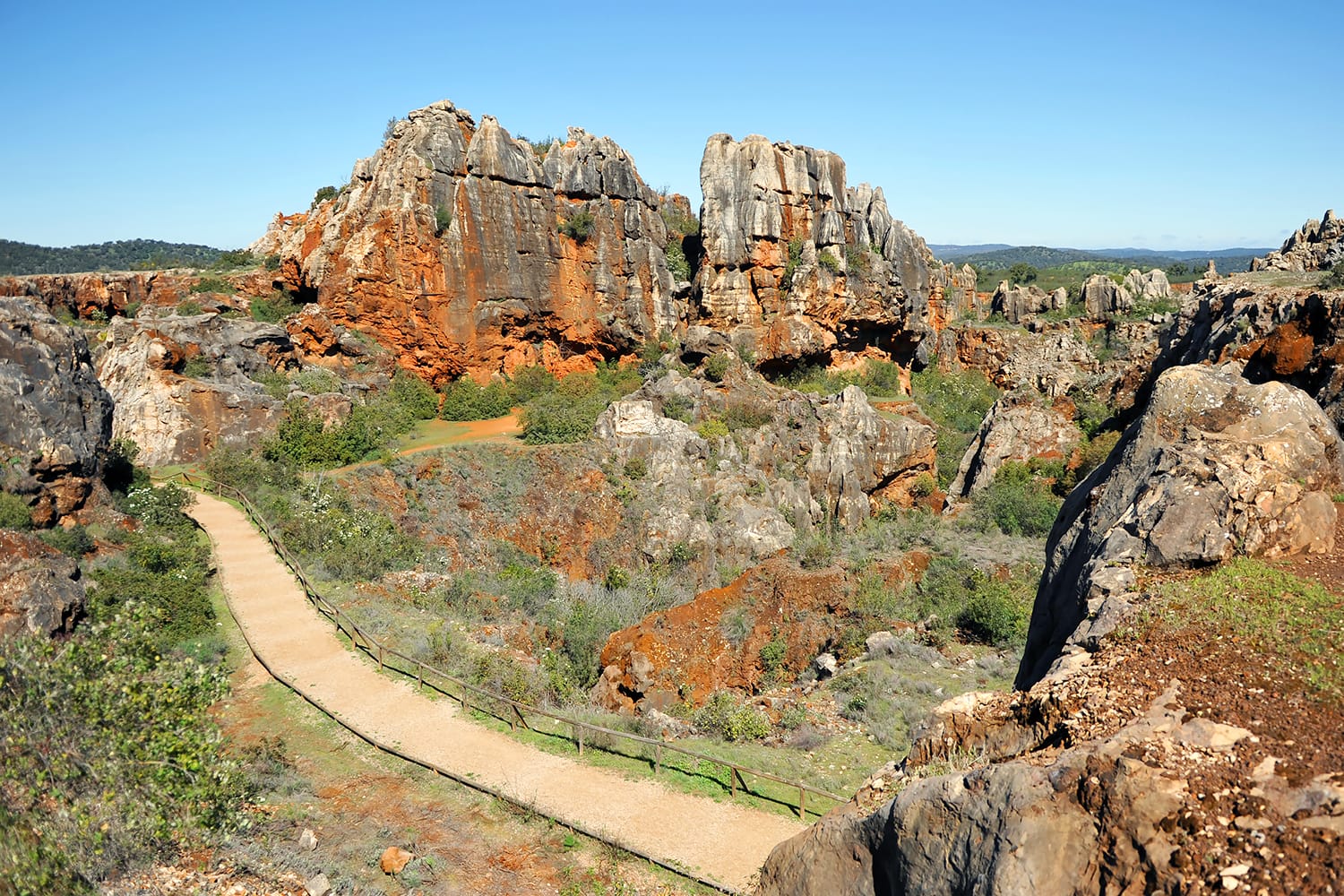
14. Sierra Norte Natural Park
For a day out in the Andalusian countryside, the rugged rolling hills of the Sierra Norte Natural Park is another great pick. Extremely popular as a weekend spot for local Sevillanos, Sierra Norte Natural Park is still mostly unknown to foreign travelers. Before heading straight out into the protected natural area, it’s best to first visit El Robledo Visitor Center to learn more about the park and also to visit its small botanical garden. Within the park, you’ll find quite a few small villages that still retain a strong Moorish flavor. You could spend your time here just driving from one village to the next, but there are natural landmarks to stop at as well, like the Cueva de los Covaches Caves and the Huéznar waterfalls. Of course, there are also plenty of walking trails that connect across the gentle hills, including the two hour Sendero de los Castañares loop.
Getting there: It’s possible to get into Sierra Norte Natural Park by public transport from Seville, with several daily trains to Cazalla Constantina and a few buses to El Pedroso. However, you’ll have trouble getting around this expansive park, which is why driving yourself is the best way to visit.
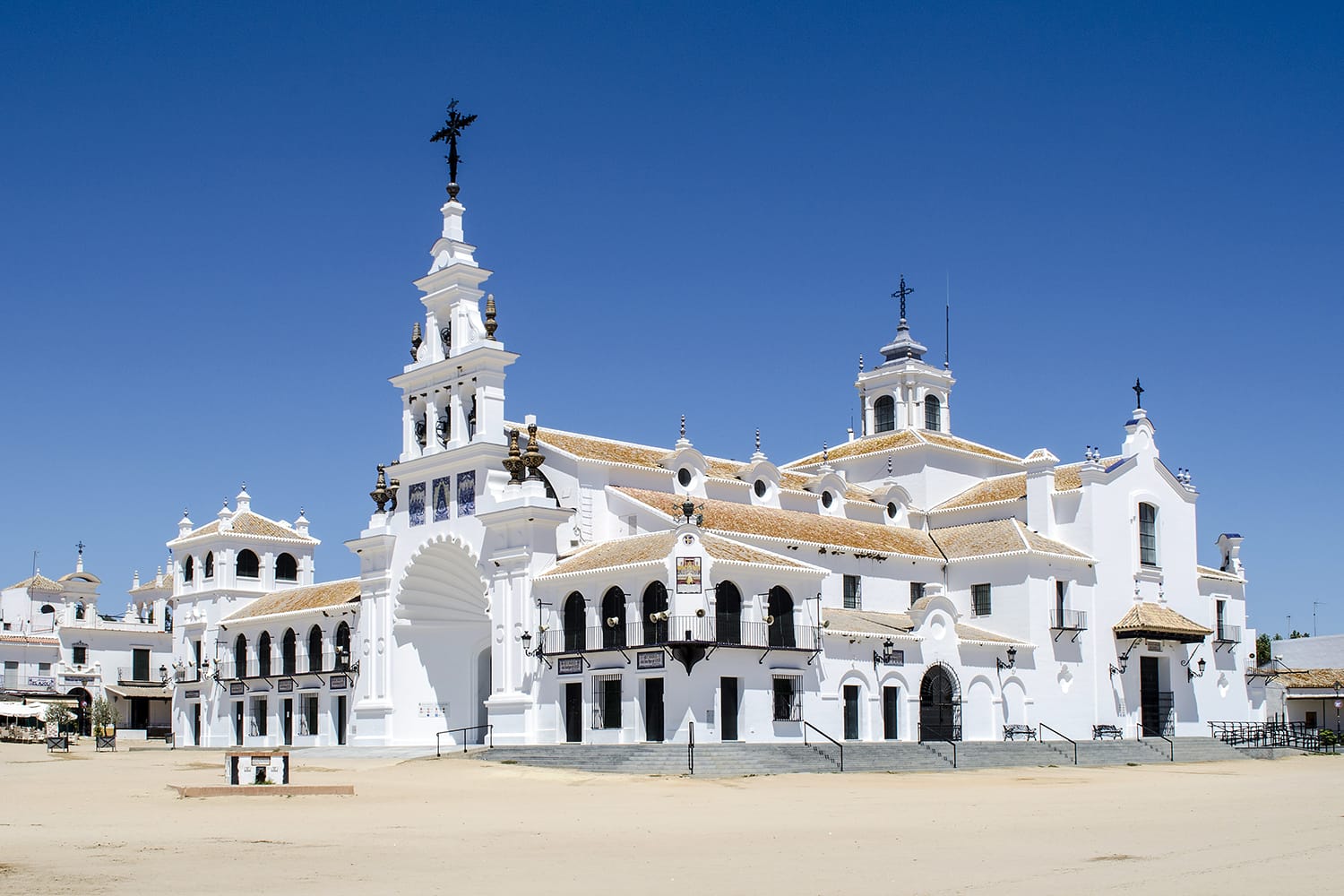
15. Huelva
While Spain’s Costa del Sol receives plenty of attention from travelers, destinations like Huelva, on the Costa de la Luz, see far fewer visitors. Huelva may not be a flashy tourist destination, but it’s great if you want an unfiltered look at what life is like in Spain. A day trip here is best begun at the main square of Plaza de las Monjas, where you’ll find a statue of explorer Christopher Columbus. From there, seek out the Huelva Cathedral for its elegant facade and then the Huelva Museum for some local history. Also not to be missed is the gleaming white Santuario de Nuestra Señora de la Cinta chapel just north of the city center. After walking around the city, you could continue on to the historic La Rabída Monastery or venture out into the nearby estuaries of the Odiel and Tinto rivers.
Getting there: Regular buses and the occasional train travel from Seville to Huelva. The bus takes just over one hour, and the train is a little slower.
As you can see, Seville makes an ideal base for those looking to explore more of Spain and nearby regions. You’ll find that the above day trips are just a starting place and that there are plenty more day trips from Seville to choose from.
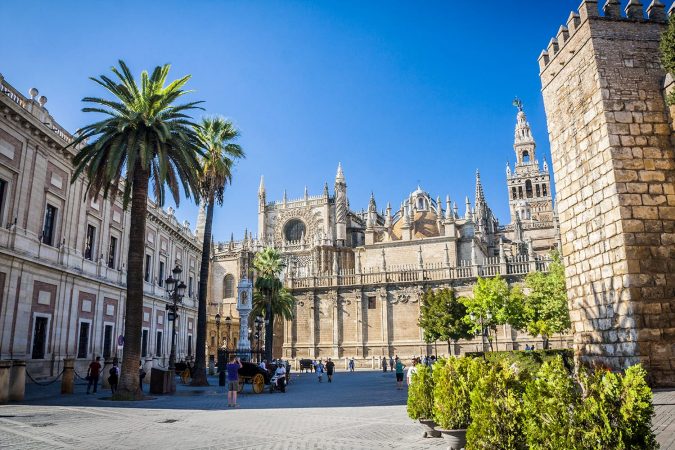

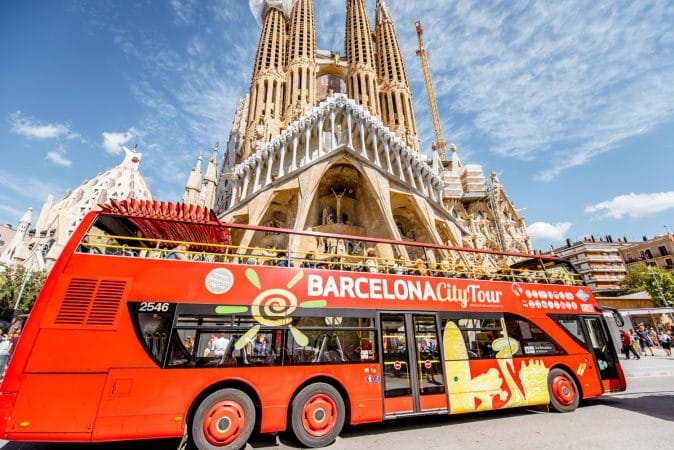
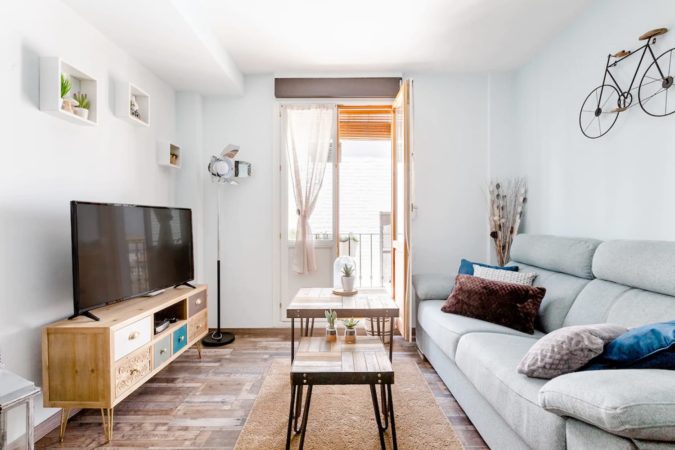


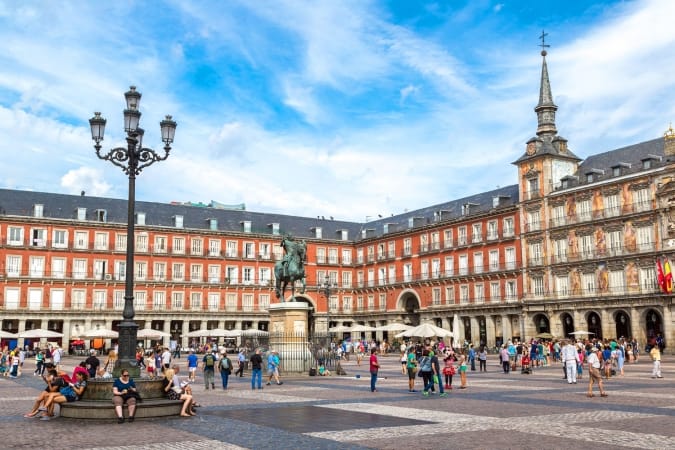
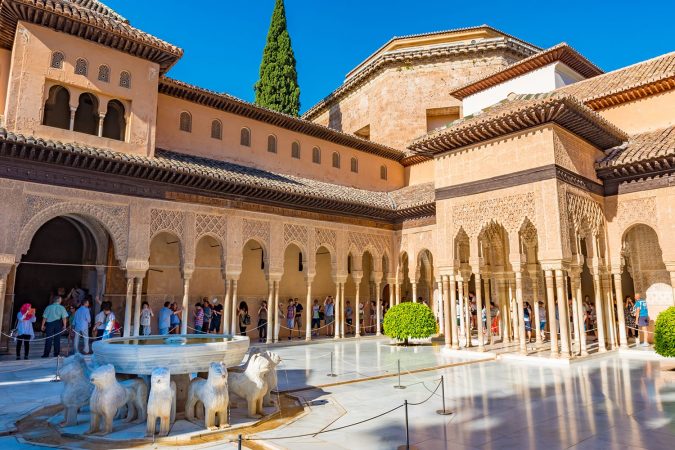
Comments